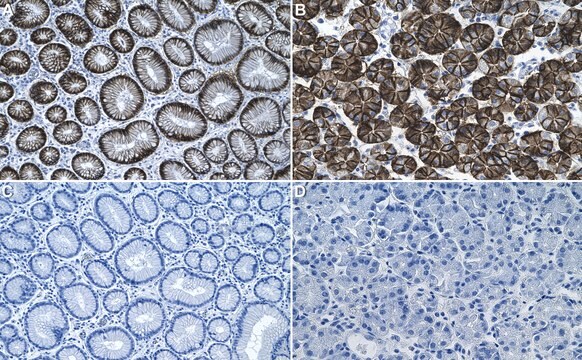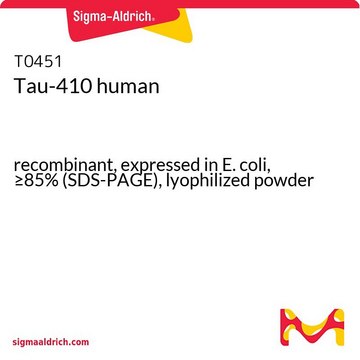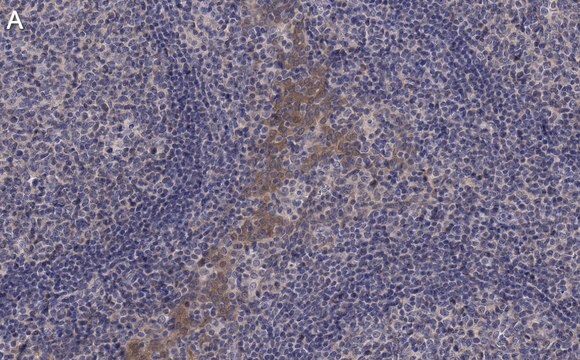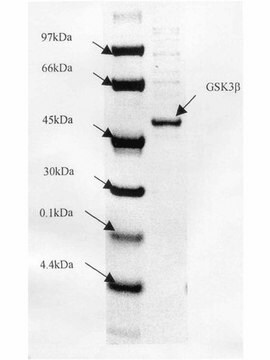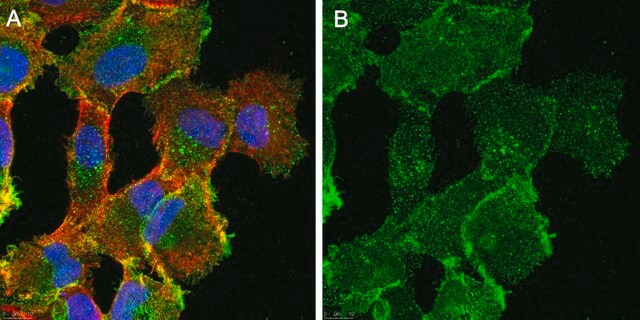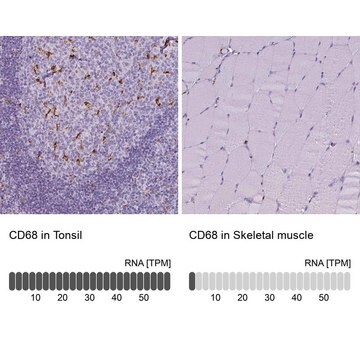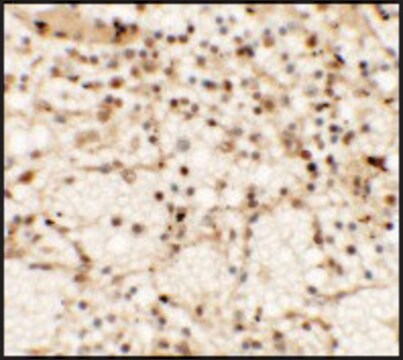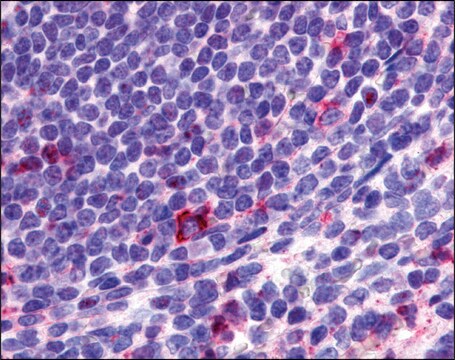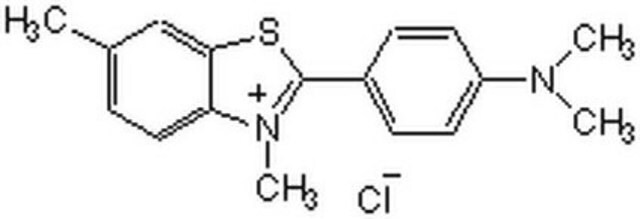추천 제품
재조합
expressed in baculovirus infected Sf9 cells
Quality Level
제품 라인
PRECISIO® Kinase
분석
≥70% (SDS-PAGE)
양식
buffered aqueous glycerol solution
특이 활성도
143-193 nmol/min·mg
분자량
~48 kDa
UniProt 수납 번호
배송 상태
dry ice
저장 온도
−70°C
유전자 정보
human ... GSK3B(2932)
일반 설명
Research area: Cellsignalling. GSK3B (glycogen synthase kinase 3β) is one of the two isoforms of GSK3 enzyme, both of which are encoded by different genes. This protein is predominantly cytoplasmic, but is also found to be localized to nucleus and mitochondria. It is a protein-serine kinase. This protein contains a protein kinase domain in its core, and is composed of 482 amino acids with a molecular weight of 46,712Da. It shows a wide range of tissue expression with the highest expression in brain.
애플리케이션
GSK3β, active, His tagged human has been used as an incubating medium during in vitro hyperphosphorylation of tau protein.
생화학적/생리학적 작용
GSK3β is a serine-threonine protein kinase that was originally identified as the kinase that phosphorylates and inhibits glycogen synthase.GSK3β is ubiquitously present in human tissues and implicated in the regulation of several physiological processes, including the control of glycogen and protein synthesis by insulin and modulation of the transcription factors AP-1 and CREB. Transient transfection of human GSK3β into Chinese hamster ovary cells stably transfected with individual human tau isoforms leads to hyperphosphorylation of tau at all the sites investigated with phosphorylation-dependent anti-tau antibodies.
Glycogen Synthase Kinase 3β (GSK3β) is responsible for rapid cyclin D1 turnover by phosphorylating it on Thr-286. It functions as a negative regulator of Wnt signaling during embryonic development and cell proliferation in adult tissues. This protein phosphorylates and regulates multiple proteins, such as glycogen synthase, insulin receptor substrate-1, axin and APC (adenomatous polyposis coli). This protein is also shown to interact with multiple proteins which are linked with Alzheimer′s disease (AD).
물리적 형태
Supplied in 50mM NaPhosphate pH 7.0, 300 mM NaCl, 150 mM imidazole, 0.1mM PMSF, 0.2 mM DTT, 25% glycerol.
법적 정보
PRECISIO is a registered trademark of Merck KGaA, Darmstadt, Germany
신호어
Danger
유해 및 위험 성명서
Hazard Classifications
Eye Irrit. 2 - Repr. 1B - Skin Irrit. 2
Storage Class Code
6.1C - Combustible acute toxic Cat.3 / toxic compounds or compounds which causing chronic effects
WGK
WGK 1
Flash Point (°F)
Not applicable
Flash Point (°C)
Not applicable
개인 보호 장비
Faceshields, Gloves, Goggles, type ABEK (EN14387) respirator filter
C Sutherland et al.
The Biochemical journal, 296 ( Pt 1), 15-19 (1993-11-15)
The beta-isoform of glycogen synthase kinase-3 (GSK3 beta) isolated from rabbit skeletal muscle was inactivated 90-95% following incubation with MgATP and either MAP kinase-activated protein kinase-1 (MAPKAP kinase-1, also termed RSK-2) or p70 S6 kinase (p70S6K), and re-activated with protein
B R Sperber et al.
Neuroscience letters, 197(2), 149-153 (1995-09-08)
Hyperphosphorylated tau protein is the major constituent of the paired helical filament (PHF), the major fibrous component of the neurofibrillary lesions of Alzheimer's disease (AD). Hyperphosphorylation of tau is believed to be the critical event that leads to filament assembly.
C A Grimes et al.
Progress in neurobiology, 65(4), 391-426 (2001-08-31)
Glycogen synthase kinase-3beta (GSK3beta) is a fascinating enzyme with an astoundingly diverse number of actions in intracellular signaling systems. GSK3beta activity is regulated by serine (inhibitory) and tyrosine (stimulatory) phosphorylation, by protein complex formation, and by its intracellular localization. GSK3beta
Richard S Jope et al.
Trends in biochemical sciences, 29(2), 95-102 (2004-04-23)
Glycogen synthase kinase-3 (GSK3) is now recognized as a key component of a surprisingly large number of cellular processes and diseases. Several mechanisms play a part in controlling the actions of GSK3, including phosphorylation, protein complex formation, and subcellular distribution.
Katharine A White et al.
The Journal of cell biology, 217(11), 3965-3976 (2018-10-14)
β-Catenin functions as an adherens junction protein for cell-cell adhesion and as a signaling protein. β-catenin function is dependent on its stability, which is regulated by protein-protein interactions that stabilize β-catenin or target it for proteasome-mediated degradation. In this study
문서
Alzheimer's disease (AD) is the most common cause of dementia in the elderly and is characterized by gradual loss of cognitive functions.
자사의 과학자팀은 생명 과학, 재료 과학, 화학 합성, 크로마토그래피, 분석 및 기타 많은 영역을 포함한 모든 과학 분야에 경험이 있습니다..
고객지원팀으로 연락바랍니다.